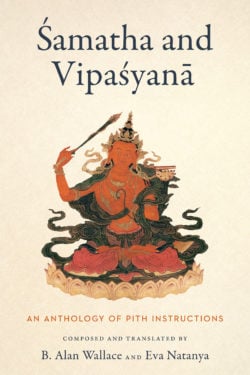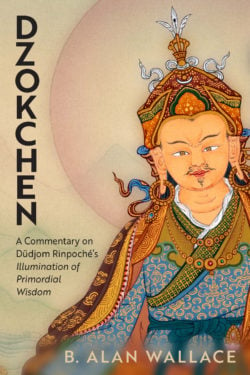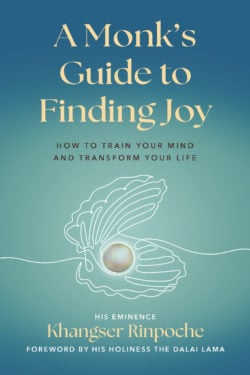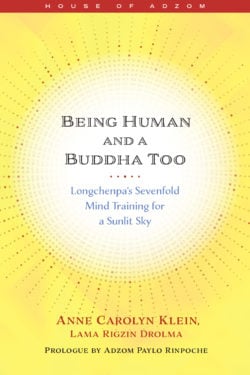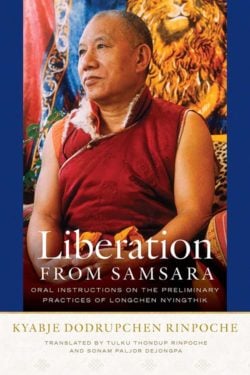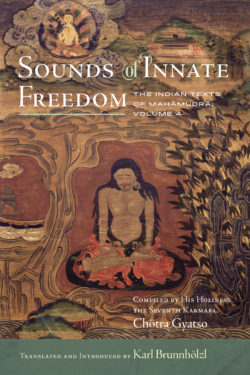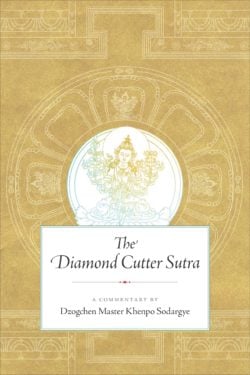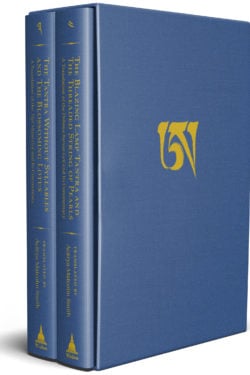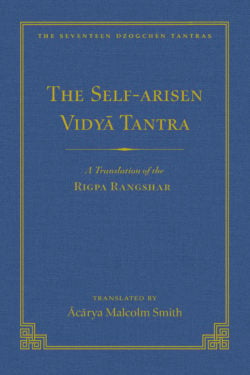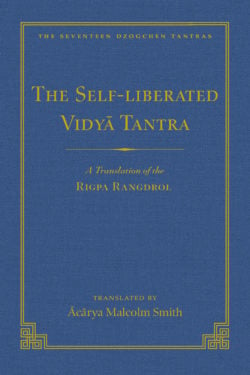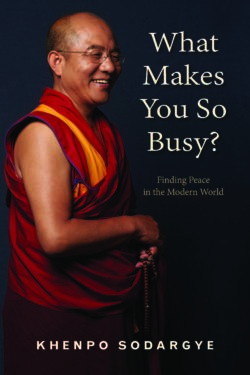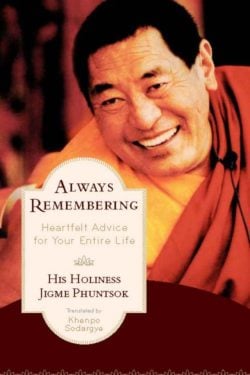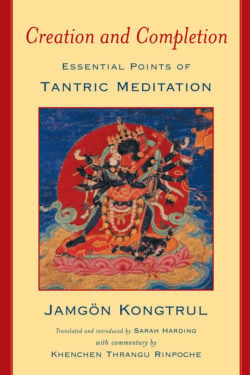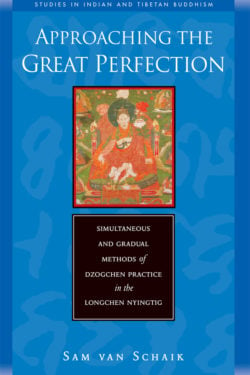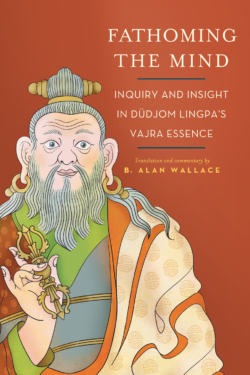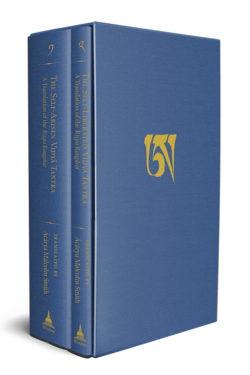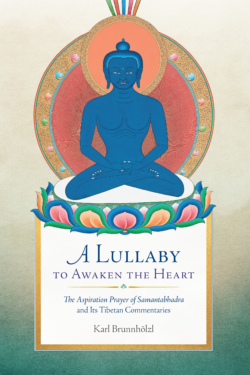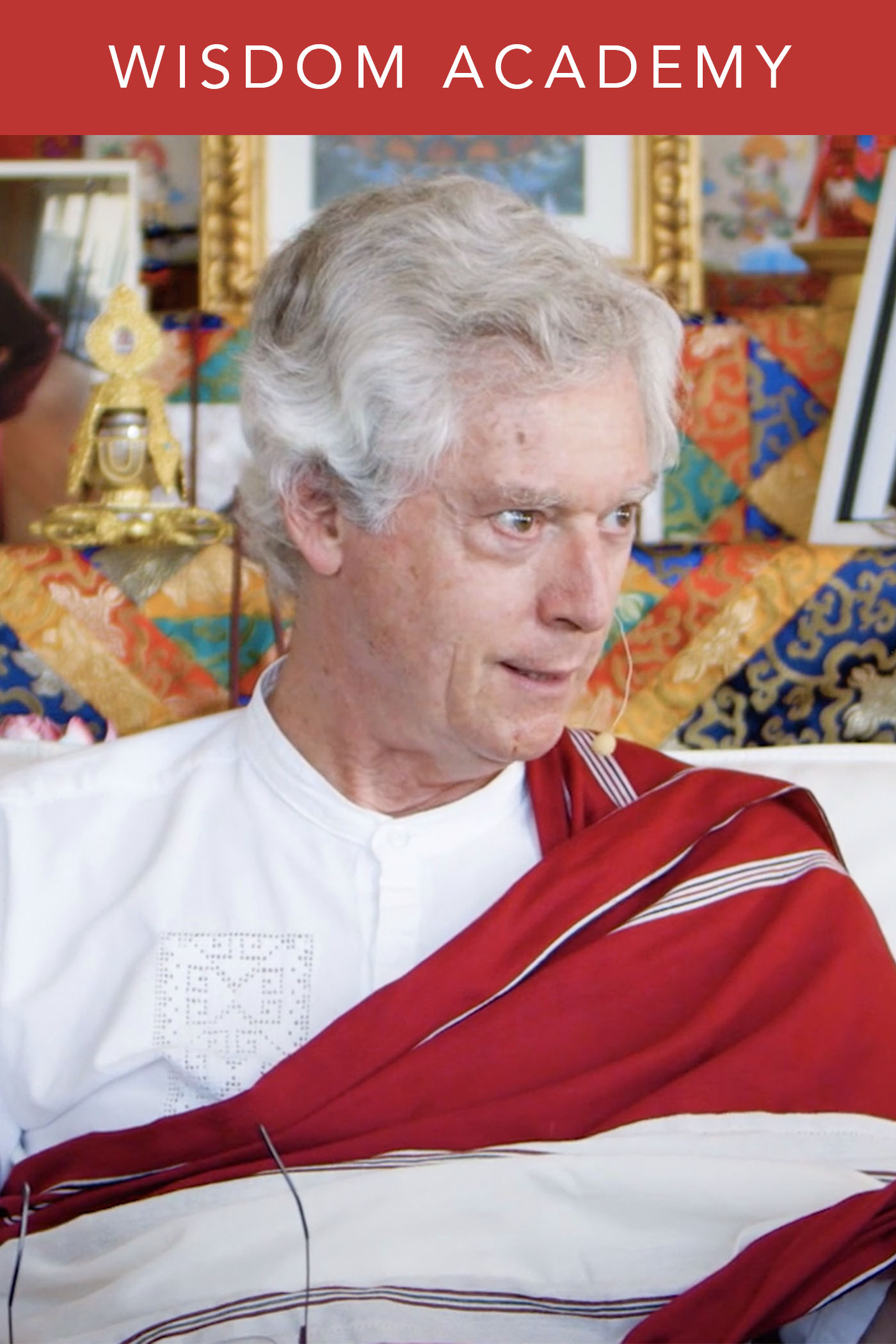
RESTRICTED DZOGCHEN TEACHINGS, PART 1
Discover More
Samatha and Vipasyana
Invaluable instructions on core meditations designed to bring about irreversible spiritual transformation.
For those who aspire to the total enlightenment of a buddha, the contemplative practices of śamatha and vipaśyanā play a crucial role from the beginning of the path to its culmination. Designed to free one first from the five obscurations that hinder the natural clarity and balance of the mind—and eventually from the ignorance that is the root of suffering—these practices, when imbued with bodhicitta, enable one to reach a pivotal stage within the Mahāyāna path of accumulation. This is the stage at which one gains irreversible, gold-like bodhicitta, after which one is assured of being a bodhisattva in all one’s future lifetimes until enlightenment.
The instructions gathered here are like a string of pearls spanning from the eleventh century to the present day. They include teachings from great Indian masters as well as renowned lamas of the past and present from the four major orders of Tibetan Buddhism, and many of the texts translated here stem from visionary teachings revealed by Mañjuśrī, Vajrapāṇi, Avalokiteśvara, and Padmasambhava. Introductions rich in biographical detail accompany each group of translated entries, providing historical context and drawing connections between complementary lineages. The concluding pith instructions from Lama Alan Wallace bring the anthology directly into the domain of contemporary practice, and a collection of links to a rich array of recorded oral teachings by eminent lamas, including His Holiness the Dalai Lama’s first teachings in the West, make this volume a treasure trove for the practitioner and scholar alike.
Dzokchen
Dudjom Rinpoche’s classic meditation manual on realizing the Great Perfection, presented and explained by Lama B. Alan Wallace.
In the concise yet comprehensive practice manual entitled Illumination of Primordial Consciousness, the great twentieth-century Tibetan Nyingma master Dudjom Rinpoche lays out a sequential path to spiritual freedom according to the teachings of the Great Perfection (Dzokchen): First, we refine our awareness by training in meditative quiescence (shamatha) and then proceed to the practices of insight meditation (vipashyana), by which our mind’s basic nature of luminosity and emptiness is revealed. Then, having recognized that the ordinary, deluded mind is actually without any intrinsic essence, we are primed to cut through this conditioned mind into unborn, timeless pristine awareness, which has never been contaminated by mental afflictions or other obscurations. Finally, we realize that our own awareness has never been other than the dharmakāya, the mind of a buddha, and perfect enlightenment is realized spontaneously and effortlessly.
Beloved teacher and renowned scholar Lama B. Alan Wallace guides the reader through this remarkable text, which he first translated for his teacher Gyatrul Rinpoche’s book Meditation, Transformation, and Dream Yoga. In this book, Lama shares insights gained over years of study, providing a line-by-line explanation interspersed with background teachings from revered Dzokchen scriptures written by Padmasambhava, Dudjom Lingpa, and others. Also included are a set of fifteen guided meditations given by Lama Wallace, along with links to audio tracks of Lama Wallace giving the instructions himself. Through the practices he describes, the mystery of the mind—its origin and what happens to it at death–is thus illuminated through one’s own meditative experience.
Lama Alan has provided several guided meditations to accompany this book and they can be found here.
A Monk’s Guide to Finding Joy
A profound and practical guide to uncovering your own wise mind and kind heart.
We all want to find happiness. But how do we go about it? In this easygoing and clear-sighted guide, celebrated Buddhist meditation and philosophy master His Eminence Khangser Rinpoche provides us with down-to-earth advice on how to train our minds and find our own innate wisdom and kindness along the way. He helps us see the profound insight that is open to us all, and how it can awaken us to the truth of the way things are. This insight into the truth, and the practices that help you cultivate this awareness, transform suffering into wisdom and compassion—and ultimately joy.
A Monk’s Guide to Finding Joy brings the ancient Tibetan mind-training tradition into our twenty-first-century lives. Through stories, real-life examples, reflections, and meditation practices—all told with warmth and humor—H.E. Khangser Rinpoche shows us how we can transform the suffering of our life into happiness. When we train the mind from within the context of our difficult emotions, we can find true joy, just as the oyster transforms sand into a pearl.
Being Human and a Buddha Too
In writing that sparkles and inspires, Anne Klein (Lama Rigzin Drolma) shows us how to liberate our buddha nature to be both human and a buddha too.
This first volume in the House of Adzom series centers on Longchenpa’s seven trainings in bodhicitta, our awakened mind, the ultimate purpose of our practice and training. Anne Klein’s original composition masterfully weaves in Adzom Paylo Rinpoche’s commentary and Jigme Lingpa’s five pith practices and commentary on the trainings, in keeping with Longchenpa’s skillful integration of sutra, tantra, and Dzogchen, to resolve our most challenging questions about what awakening involves and how it relates to the truth of our human situation right now. As foundational teachings for Dzogchen practitioners, the seven trainings are framed as contemplations on impermanence, the adventitiousness of happiness and its short duration, the multiple causes of death, the meaninglessness of our worldly activities, reliance on the Buddha’s good qualities, the teacher’s pith instructions, and ultimately nonconceptual meditation on bliss and emptiness, clarity and emptiness, and reality itself.
Liberation from Samsara
This rare teaching by Rinpoché is a uniquely concise volume of the teachings of the path to liberation that is authentic, authoritative, and complete.
In Liberation from Samsara, the Fourth Kyabjé Dodrupchen Rinpoché presents the Longchen Nyingthik preliminary teachings, with a special focus on guru yoga. These teachings, from the innermost secret instruction of Dzogchen, constitute a complete path to enlightenment.
After discussing the ways to turn our mind toward Dharma and the trainings, Rinpoché provides guru yoga instruction as he turns to the main tantric practice: meditations on unifying one’s mind with Guru Rinpoché’s wisdom mind. This rare teaching by Rinpoché, though intentionally succinct to accommodate the needs of contemporary Western practitioners, presents a complete path to enlightenment. It contrasts three different paths to liberation: Shravakayana (the way of the disciple), Pratyekabuddhayana (the way of the self-enlightened buddha), and Mahāyāna (the way of the bodhisattva), which is our way, our boundless intention to seek refuge in order to free all sentient beings from samsaric suffering.
Sounds of Innate Freedom, Vol. 4
Sounds of Innate Freedom: The Indian Texts of Mahāmudrā are historic volumes containing many of the first English translations of classic mahamudra literature. The texts and songs in these volumes constitute the large compendium called The Indian Texts of the Mahāmudrā of Definitive Meaning, compiled by the Seventh Karmapa, Chötra Gyatso (1456–1539). The collection offers a brilliant window into the richness of the vast ocean of Indian mahamudra texts cherished in all Tibetan lineages, particularly in the Kagyü tradition, giving us a clear view of the sources of one of the world’s great contemplative traditions.
Besides the individual dohās (couplets), vajragītis (vajra songs), and caryāgītis (conduct songs) in this second volume in publication, the three extensive commentaries it contains brilliantly unravel enigmas and bring clarity not only to the specific songs they comment on but to many other, often cryptic, songs of realization in this collection. These expressive songs of the inexpressible offer readers a feast of profound and powerful pith instructions uttered by numerous male and female mahāsiddhas, yogis, and ḍākinīs, often in the context of ritual gaṇacakras and initially kept in their secret treasury. Displaying a vast range of themes, styles, and metaphors, they all point to the single true nature of the mind—mahāmudrā—in inspiring ways and from different angles, using a dazzling array of skillful means to penetrate the sole vital point of buddhahood being found nowhere but within our own mind. Reading and singing these songs of mystical wonder, bliss, and ecstatic freedom, and contemplating their meaning, will open doors to spiritual experience for us today just as it has for countless practitioners in the past.
Click here to explore other volumes available in The Sounds of Innate Freedom series.
The Diamond Cutter Sutra
In the profound teachings of the Diamond Cutter Sutra, the Buddha offers a view of the world that deconstructs our normal categories of experience to show us that what we think are real entities in the world are actually our conceptualizations. The Buddha teaches us to cut our attachment to all phenomena and to the “I,” which are empty of inherent existence, and in so doing, cut the root cause of our suffering. Yet without wise guidance we may think that because all phenomena are empty there is no need to be attached to virtue, and thus we fall into the worst trap of all—an attachment to emptiness. How do we destroy our attachment without being led astray?
With this question in mind, Dzogchen Master Khenpo Sodargye provides sparkling commentary on the Diamond Cutter Sutra so that we understand its actual meaning, thus preparing us to understand the view of the Great Perfection and Mahamudra. Before recognizing the nature of the mind, we learn we must hold on to things that are virtuous and right. Like a boat, these can help us cross a river; until we reach the other shore, it makes no sense to give them up.
The Tantra Without Syllables (vol 3) and The Blazing Lamp Tantra (vol 4)
“If one knows the Self-Arisen Vidya Tantra, the Self-Liberated Vidya Tantra, and the Tantra Without Syllables, one will have command over the general meaning of the tantras, like a king who has command over his subjects.”—Treasury of the Supreme Vehicle
The eleventh-century Seventeen Tantras are among the most important texts in the tradition of the Great Perfection—and in all of Tibetan Buddhism. This set provides two luminous root texts in crystal-clear translation, along with their commentaries, which break down the tantra passage by passage under headings that contextualize many instructions for the practice of the Great Perfection. The two texts are published together because they contain some of the most detailed expositions on which are based the two essential practices of the Great Perfection: trekchö, the view, and thögal, the meditation.
The Tantra Without Syllables focuses on the theoretical basis for trekchö. The actual tantra discussed in this text is not the words of the tantra, but rather the subject matter that the tantra points to: the continuum of one’s own vidyā confirmed in a direct perception, which cannot be explained in words. The Blazing Lamp Tantra focuses on the theoretical basis of thögal, detailing the four lamps, which are crucial for understanding the contemplative visions unique to the Great Perfection.
Malcolm Smith’s simple and lucid introductions bring clarity to an intricate subject, making these volumes vital reading for any student of Dzogchen.
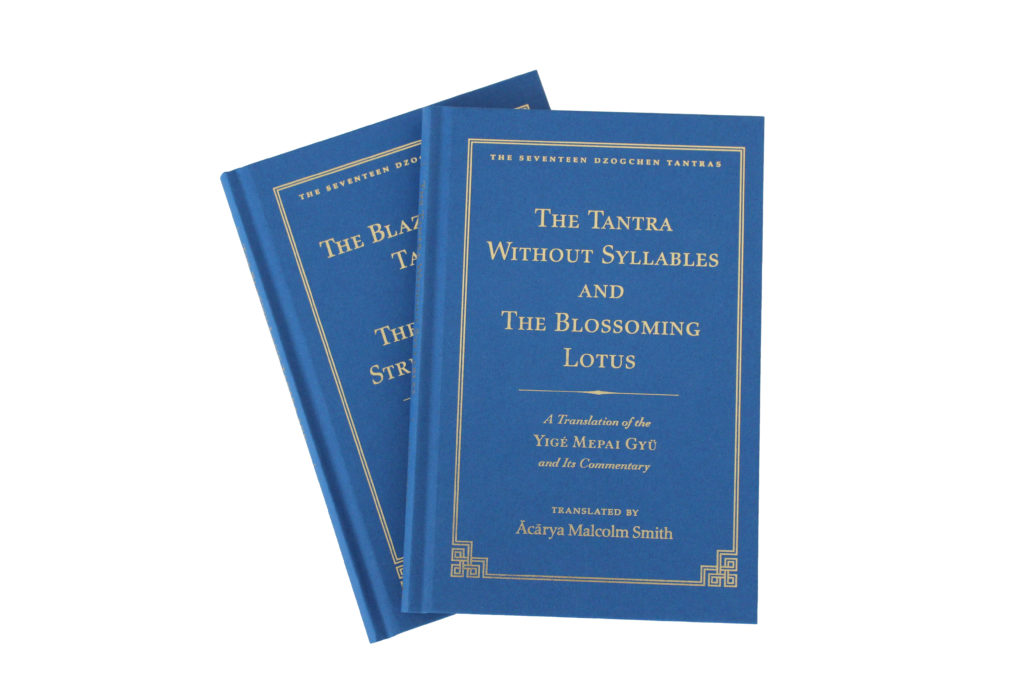
Self-Arisen Vidya Tantra (vol 1) ebook
“If one knows the Self-Arisen Vidya Tantra, the Self-Liberated Vidya Tantra, and the Tantra Without Syllables, one will have command over the general meaning of the tantras, like a king who has command over his subjects.”—Treasury of the Supreme Vehicle
The eleventh-century Seventeen Tantras are the most important texts in the Tibetan Buddhist tradition of the Great Perfection. This first volume of the new series from Malcolm Smith is the only complete English translation of the Rigpa Rangshar, which is the major commentary tantra on all aspects of the doctrine of the Great Perfection.
Malcolm Smith also offers a comprehensive introduction. Two vital appendices and a rich index for both volumes can be found in volume 2, The Self-Liberated Vidya Tantra, available in ebook form here.
This is vital reading for any student of Dzogchen.
Self-Liberated Vidya Tantra (vol 2) ebook
“If one knows the Self-Arisen Vidya Tantra, the Self-Liberated Vidya Tantra, and the Tantra Without Syllables, one will have command over the general meaning of the tantras, like a king who has command over his subjects.”—Treasury of the Supreme Vehicle
The eleventh-century Seventeen Tantras are the most important texts in the Tibetan Buddhist tradition of the Great Perfection. The Self-Liberated Vidyā Tantra, a translation of the Rigpa Rangdrol, outlines the structure of Dzogchen tantras in general and also provides a detailed outline of the Self-Arisen Vidyā Tantra, available here as an ebook. This volume also includes a brief historical account and survey of the Seventeen Tantras, an examination of the themes of the Seventeen Tantras, translated from the commentary to the String of Pearls Tantra, and an exhaustive index that encompasses both the Self-Arisen Vidya Tantra and the Self-Liberated Vidya Tantra.
This is vital reading for any student of Dzogchen.
What Makes You So Busy?
Khenpo Sodargye, a world-famous Tibetan Buddhist lama and scholar, offers guidance on an issue that troubles so many of us in the modern world: What is true happiness, and how do we achieve it?
Bombarded with information, endlessly pursuing possessions—we look for happiness in all the wrong places. Khenpo Sodargye, one of the busiest Buddhist teachers in the world, shows us how to redirect our attention away from such distractions and instead calm our minds and find true contentment.
Always Remembering
His Holiness Jigme Phuntsok was a prominent teacher in the Nyingma tradition of Tibetan Buddhism. He was recognized as a tertön and renowned for his mastery of Dzokchen and his visionary activities, including the establishment of the nonsectarian Buddhist community of Larung Gar, one of the largest monastic settlements in the world and a vibrant Buddhist teaching center that has contributed enormously to the resurgence of Buddhism in Tibet and China.
In memory of the thirteenth anniversary of Rinpoche’s passing, this memorial book was compiled based on audio recordings of his precious and renowned teachings. It includes stories of the lives of great masters and the four great Dharma gatherings at Larung Gar, as well as teachings on the principle of cause and effect, keeping an open mind toward all religious traditions, spreading the Dharma and benefiting sentient beings, and mastering what to adopt and what to abandon.
Readers will also learn about Tibetan culture, customs, and the many kinds of Tibetan tulkus. His Holiness Jigme Phuntsok’s heartfelt advice on how to improve interpersonal relationships enables us to live with more ease and joy. Five poems by Jigme Phuntsok in both Tibetan and English translation enrich the teachings with His Holiness’s poetic voice.
Creation and Completion
Creation and Completion represents some of the most profound teachings of Jamgön Kongtrul (1813-99), one of the true spiritual and literary giants of Tibetan history. Though brief, it offers a lifetime of advice for all who wish to engage in-and deepen-the practice of tantric Buddhist meditation.
The original text, beautifully translated and introduced by Sarah Harding, is further brought to life by an in-depth commentary by the contemporary master Thrangu Rinpoche. Key Tibetan Buddhist fundamentals are quickly made clear, so that the reader may confidently enter into tantra’s oft-misunderstood “creation” and “completion” stages.
In the creation stage, practitioners visualize themselves in the form of buddhas and other enlightened beings in order to break down their ordinary concepts of themselves and the world around them. This meditation practice prepares the mind for engaging in the completion stage, where one has a direct encounter with the ultimate nature of mind and reality.
Awakening Through Love
Mother Theresa. The Dalai Lama. Nelson Mandela. Gandhi. Some admire such figures from afar and think, “How special they are; I could never be like that.” But, as John Makransky has learned, the power of real and enduring love lies within every one of us. Awakening Through Love is his guide to finding it.
In Awakening Through Love, he pioneers new ways of making Tibetan meditations of compassion and wisdom accessible to people of all backgrounds and faiths. Drawing from Tibetan teachings of compassion and the Dzogchen teachings of innate wisdom, and using plain, practical instruction, he helps readers uncover the unity of wisdom and love in the very nature of their minds. Then Lama John describes how to actualize those qualities in every aspect of family life, work, service and social action.
You can listen to the guided meditations described in the book here.
Approaching the Great Perfection
Dzogchen, the Great Perfection, is the highest meditative practice of the Nyingma School of Tibetan Buddhism. Approaching the Great Perfection looks at a seminal figure of this lineage, Jigme Lingpa, an eighteenth-century scholar and meditation master whose cycle of teachings, the Longchen Nyingtig, has been handed down through generations as a complete path to enlightenment. Ten of Jigme Lingpa’s texts are presented here, along with extensive analysis by van Schaik of a core tension within Buddhism: Does enlightenment develop gradually, or does it come all at once? Though these two positions are often portrayed by modern scholars as entrenched polemical views, van Schaik explains that both tendencies are present within each of the Tibetan Buddhist schools. He demonstrates how Jigme Lingpa is a great illustration of this balancing act, using the rhetoric of both sides to propel his students along the path of the Great Perfection.
Learn more about the Studies in Indian and Tibetan Buddhism series.
Read Jigme Lingpa’s biography at the Treasury of Lives.
Fathoming the Mind
Fathoming the Mind continues the commentary to Düdjom Lingpa’s Vajra Essence that appeared in Stilling the Mind, daringly contextualizing Buddhist teachings on the Great Perfection as a revolutionary challenge to many contemporary beliefs. This companion volume stems from an oral commentary that B. Alan Wallace gave to the next section of the Vajra Essence, on the cultivation of contemplative insight, or vipaśyanā, that fathoms the nature of existence as a whole. Düdjom Lingpa’s revelation consists of a fascinating dialogue that occurred during his pure vision of Samantabhadra, personification of primordial consciousness, manifesting as the youthful form of the Lake-born Vajra emanation of Padmasambhava, in dialogue with an entourage of bodhisattvas symbolizing various aspects of Düdjom Lingpa’s mind.
In continuing to reflect on Düdjom Lingpa’s writings and their relevance to the modern world, Alan was inspired to elaborate extensively on his original commentary. This book includes introductory essays and an afterword, which explore how the insights discussed here might contribute to yet a new “contemplative revolution,” one that would be as far-reaching in its implications as the scientific revolutions triggered by the discoveries of Galileo, Darwin, and Einstein.
The Self-Arisen Vidya Tantra (vol 1) and The Self-Liberated Vidya Tantra (vol 2)
“If one knows the Self-Arisen Vidya Tantra, the Self-Liberated Vidya Tantra, and the Tantra Without Syllables, one will have command over the general meaning of the tantras, like a king who has command over his subjects.”—Treasury of the Supreme Vehicle
The eleventh-century Seventeen Tantras are the most important texts in the Tibetan Buddhist tradition of the Great Perfection. This boxed set provides two luminous translations. The first is the only complete English translation of the Self-Arisen Vidyā Tantra, which is the major commentary tantra on all aspects of the doctrine of the Great Perfection. The second, the Self-Liberated Vidyā Tantra, outlines the structure of Dzogchen tantras in general and also provides a detailed outline of the Self-Arisen Vidyā Tantra.
Malcolm Smith also offers a comprehensive introduction and two vital appendices: (1) a brief historical account and survey of the Seventeen Tantras and (2) an examination of the themes of the Seventeen Tantras, translated from the commentary to the String of Pearls Tantra. This is vital reading for any student of Dzogchen.
If you would like to purchase the ebook of these volumes please click here for volume 1 and here for volume 2.
A Lullaby to Awaken the Heart
The Aspiration Prayer of Samantabhadra, one of the most famous and often-recited Dzogchen texts, is at once an entreaty by the primordial buddha, Samantabhadra, that all sentient beings recognize the nature of their minds and thus become buddhas, and also a wake-up call by our own buddha nature itself. This monumental text outlines the profound view of Dzogchen in a nutshell and, at the same time, provides clear instructions on how to discover the wisdom of a buddha in the very midst of afflictions.
In this volume, Karl Brunnhölzl offers translations of three versions of the Aspiration Prayer and accompanies them with translations of the commentaries by Jigmé Lingpa, the Fifteenth Karmapa, and Tsültrim Sangpo. He offers further contextualization with his rich annotation and appendices, which include additional translation from Jigmé Lingpa, Longchenpa, and Patrul Rinpoche. This comprehensive, comprehensible book illuminates this profound text and greatly furthers our understanding of Dzogchen—and of our own nature.

